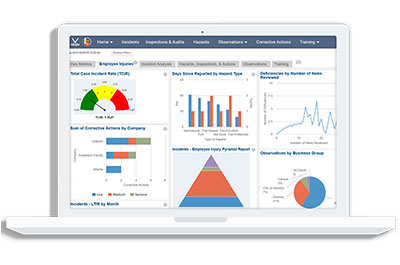Protection is studying | September 2020
Occupational protection and overall health specialists are getting to be less concentrated with compliance and progressively interested in facilitating understanding at their businesses.
Researchers have discovered psychological safety as central in organizational finding out. In her e book, “The Fearless Organization: Creating Psychological Basic safety in the Workplace for Finding out, Innovation, and Growth,” Amy Edmondson defines psychological basic safety as:
-
“Psychological protection is broadly outlined as a local weather in which men and women are cozy expressing and becoming on their own. A lot more especially, when folks have psychological security at operate, they come to feel comfy sharing concerns and issues with no panic or shame or retribution. They are self-confident that they can converse up and will not be humiliated, dismissed, or blamed. They know they can question queries when they are uncertain about anything. They tend to have faith in and regard their colleagues.”
To facilitate firm finding out, the initial factor basic safety pros should really do is ensure a office that is psychologically risk-free. As soon as that is in put, there’s significantly much more a safety skilled can do to lead to organizational finding out. We have shown a couple under.
 Establish and provide powerful, evidence-based mostly basic safety and well being teaching: Mastering scientists have done research and analyzed facts to discover what instruction approaches support individuals discover (and later transfer that understanding to position overall performance) and what doesn’t. For instance, the properly-regarded principle of designing instruction to match distinctive people’s so-termed “learning styles” has not been supported by analysis and is now frequently referred to as a “learning fantasy,” whereas methods this kind of as crafting understanding targets, awakening prior information, chunking training resources, giving opportunities for observe and offering comments, interleaving, working with examples and worked examples, making in prompts for reflection and elaboration, and employing spaced exercise have been shown to be helpful. Read up on proof-based training investigate to find out more about how to prepare personnel to work more safely – a great area to begin is Julie Dirksen’s e-book, “Design for How Individuals Study.”
Establish and provide powerful, evidence-based mostly basic safety and well being teaching: Mastering scientists have done research and analyzed facts to discover what instruction approaches support individuals discover (and later transfer that understanding to position overall performance) and what doesn’t. For instance, the properly-regarded principle of designing instruction to match distinctive people’s so-termed “learning styles” has not been supported by analysis and is now frequently referred to as a “learning fantasy,” whereas methods this kind of as crafting understanding targets, awakening prior information, chunking training resources, giving opportunities for observe and offering comments, interleaving, working with examples and worked examples, making in prompts for reflection and elaboration, and employing spaced exercise have been shown to be helpful. Read up on proof-based training investigate to find out more about how to prepare personnel to work more safely – a great area to begin is Julie Dirksen’s e-book, “Design for How Individuals Study.”
Research typical do the job: Invest less time in your business office away from the “sharp conclusion,” where frontline staff are executing the perform of your business, and invest fewer time completing paperwork. Rather, commit more time in the field studying how work is basically carried out (and studying why). Discover we’re speaking about how operate is done – not how it is done or how it’s explained in your treatments. To do this, you will have to talk to personnel questions about how do the job is seriously performed and why it’s carried out that way. Recognize you won’t get serious, handy solutions except if psychological security is by now in put and workers have confidence in that they can inform you about factors like intentionally not subsequent composed techniques. Go through Todd Conklin’s e book, “Pre-Incident Investigations: Much better Questions,” to find out far more about this.
Reconsider your incident investigation procedures: While this isn’t real in all cases, it is even now the circumstance that common incident investigations too generally drop prey to the cognitive biases of the investigator, notably such as hindsight bias (in which the investigator makes use of information and facts readily available only soon after an incident to appraise the actions of workers just before the incident) and confirmation bias (in which the investigator has a inclination to uncover what he or she now thinks) propose overly simplistic identifications of a one root bring about as an alternative of identifying interrelated and/or techniques challenges or wind up pointing at “human error,” quite possibly major to pointlessly retraining employees with out making added benefits in basic safety and finding out. Take into account alternate procedures, which include so-called learning teams. See the ebook “The Exercise of Discovering Teams” by Brent Sutton, et al., for extra.
 Reconsider your security metrics: Whilst quite a few corporations try to measure safety efficiency using lagging indicators such as incident rates to measure protection, it is broadly considered these are significantly less-than-great steps and potentially even misleading. Right after all, by now lots of are acquainted with the tale of the Deepwater Horizon oil spill and how it transpired soon immediately after a collecting to celebrate a deficiency of incidents. Go through Carsten Busch’s “If You Can’t Measure It…It’s possible You Shouldn’t” to master additional about basic safety metrics.
Reconsider your security metrics: Whilst quite a few corporations try to measure safety efficiency using lagging indicators such as incident rates to measure protection, it is broadly considered these are significantly less-than-great steps and potentially even misleading. Right after all, by now lots of are acquainted with the tale of the Deepwater Horizon oil spill and how it transpired soon immediately after a collecting to celebrate a deficiency of incidents. Go through Carsten Busch’s “If You Can’t Measure It…It’s possible You Shouldn’t” to master additional about basic safety metrics.
With any luck ,, you have uncovered anything of value in this report and can use some of the ideas and proposed assets to contribute to studying at your firm, primary to raise successes, greater safety and far more organizational resilience. Superior luck and preserve finding out!
ABOUT THE Author: Jeff Dalto will work with Vector Alternatives and Convergence Teaching. He aided build the American Culture of Safety Professionals’s criteria on EHS coaching, and writes and offers routinely on protection and safety training.
This write-up represents the views of the writer and really should not be construed as a Nationwide Basic safety Council endorsement.
